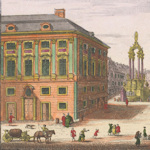
Browsing the wonderful open content collection of the Rijksmuseum turned up several old photos of Vienna.
I spent a weekend photographing the sites so we can compare before and after views of city landmarks. Enjoy the results…
- See also:
- Sightseeing in Vienna
- Photography exhibitions in Vienna
The Graben
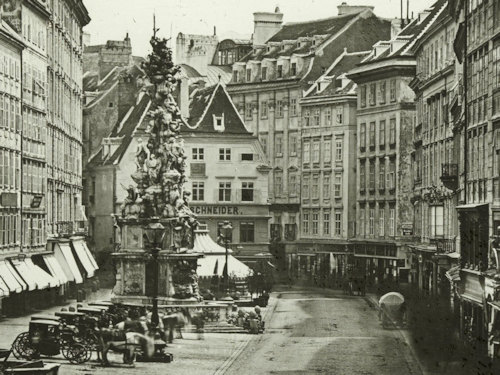
(View down the Graben, sometime between 1860 and 1866)
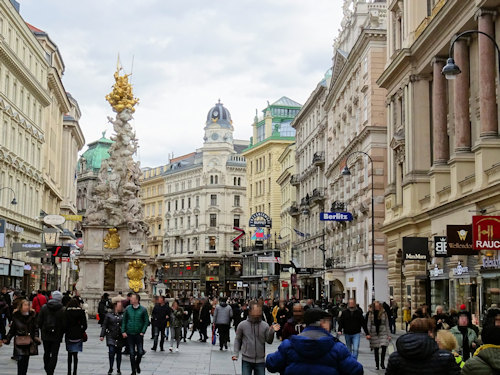
(The Graben now)
Today, the Graben forms the showpiece of Vienna’s pedestrianised old town streets.
Back then, the Elefantenhaus blocked one end, leaving two small alleyways on either side.
The front of that inconveniently-placed house featured an elephant in relief, commemorating Archduke Maximilian’s triumphant arrival in the city in 1552 with one such animal in tow. They removed the house and opened up the Graben fully in 1866.
The monument on the left of both photos is a 17th-century plague column and the famous artist, Hundertwasser, once had a studio in the yellow building on the right of the modern photo (the Ankerhaus).
Michaelerplatz
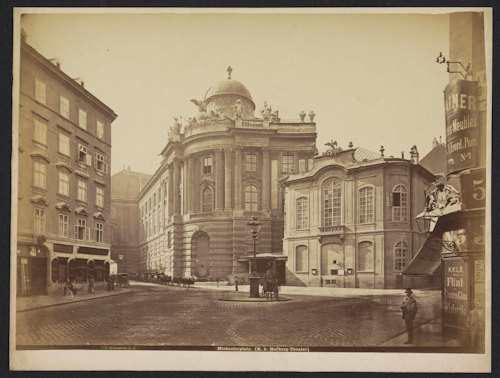
(Michaelerplatz sometime between 1850 and 1888)
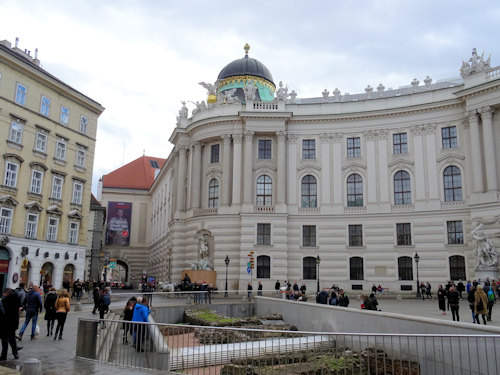
(Michaelerplatz now, though the square has since been renovated)
Michaelerplatz sits at one end of the Hofburg palace complex in the centre. On the right of the old photo is the court theater.
This moved to new premises in 1888, allowing them to tear down the building and give the Hofburg the nice extended single façade you see today. The rooftop stone eagle from the old theatre now sits in the Theatermuseum.
The Michaelerplatz square itself has a long history; the fenced off area at the bottom of the colour photo contains Roman excavations.
Since I took the modern photo, they started (and finished) construction work on the square, so the surface has a new look. The buildings remain the same, of course.
Am Hof
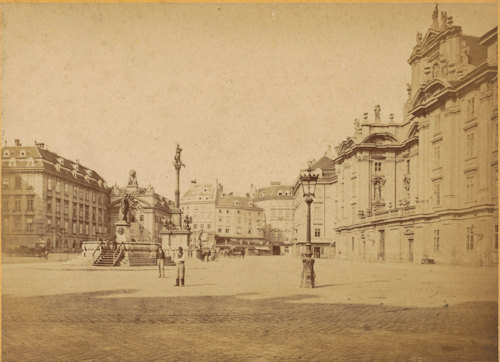
(Am Hof square sometime between 1870 and 1890)
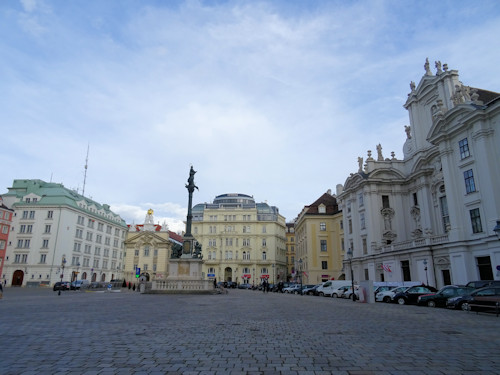
(Am Hof now)
This area marks perhaps the true historical centre of Vienna, since the Romans and the first Duke of Austria lived here.
The Marian Column on the left dates back to 1667, the fountain in front of it to 1732. Parts of the Kirche am Hof on the right of the Am Hof square date back to 1386 (the front is mid-17th century). Apart from the missing fountain, not a lot has changed!
Theresianum

(The Theresianum sometime between 1745 and 1775)

(The Theresianum now)
This palatial building in Vienna’s 4th district has its roots in the 13th century and was a summer residence of various Emperors. Now a school (and has been since around 1750).
Palais Todesco
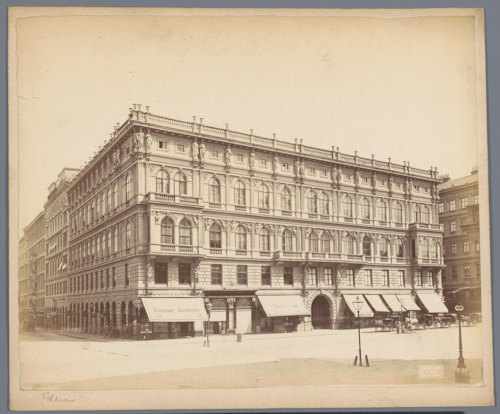
(Palais Todesco, late 19th century I think)
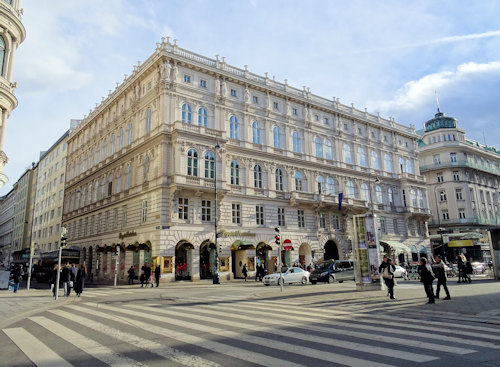
(Palais Todesco now)
Palais Todesco opposite the Staatsoper was built in 1861, but the photo is sometime after 1874, because that’s when the pictured Habig hat shop first opened. Last time I checked, the Habig family still make hats in Vienna.
The Rathaus
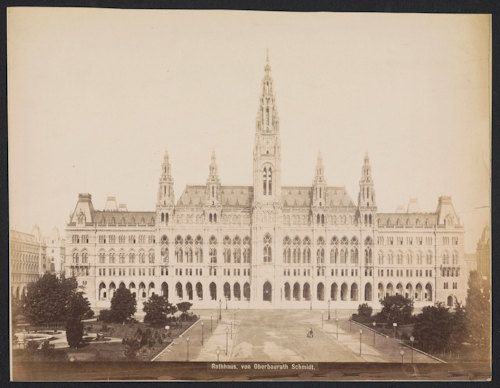
(The Rathaus in the late 19th century)
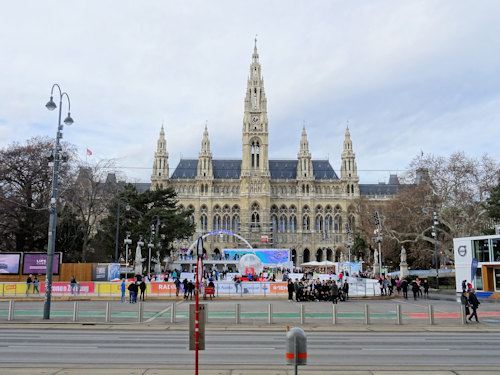
(The Rathaus now)
They completed the new Rathaus (city hall) building in 1883. The photo is probably just a few years younger, with a lone street cleaner in the square. Today, that square hosts numerous events, like the Vienna Ice World open-air ice skating in the modern photo.
The trees have grown a bit, too.
Since I took the modern photo, the Rathaus has completed a major renovation and cleaning of the façade. So all looks sparkly and new.
The Albertina
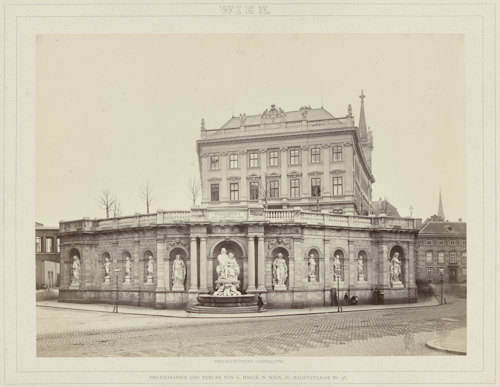
(The Albertina and Albrechtsbrunnen fountain (built 1869), sometime between 1870 and 1880)
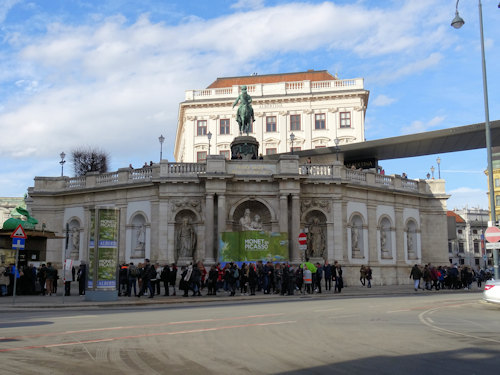
(The Albrechtsbrunnen fountain now)
The Albertina Palace (now an outstanding art museum) sits above the wall fountain. The queue in the modern photo is for fried sausages at the famous Bitzinger Würstelstand.
The “new” statue is an 1898 bronze monument to Archduke Albrecht by Caspar Zumbusch, who also designed the Beethoven, Radetzky, and Maria Theresa monuments.
Stephansplatz

(The old Haas House, probably late 19th century)
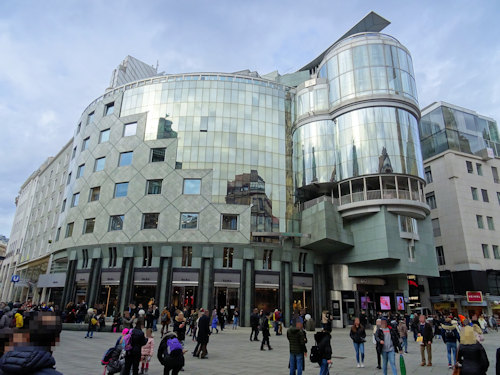
(The new Haas House now)
The palatial Haashaus on Stephansplatz, built in 1867, was actually a carpet shop. Unfortunately, it fell victim to aerial bombing in 1945.
The current Haashaus appeared in 1990 and houses a hotel, restaurant and shops at the time of writing. You can see Stephansdom cathedral mirrored in the facade.
As you can imagine, the newer design caused some controversy at the time, but has become an accepted part of the old town landscape now.
Justizpalast
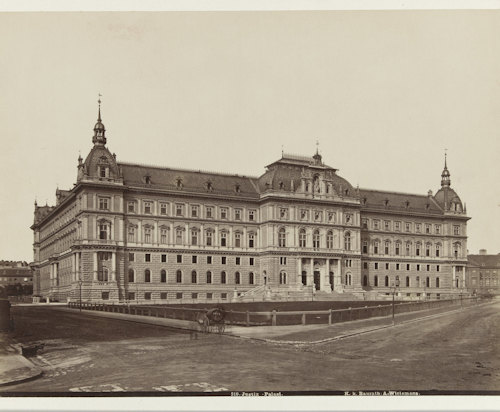
(The Palace of Justice, late 19th century)
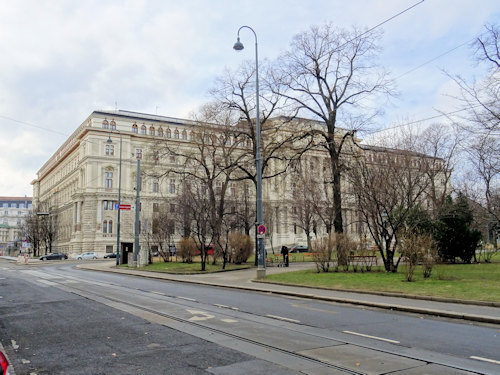
(Justizpalast now)
Finished in 1881, the Palace of Justice still provides a home for various public prosecution offices and courts, including the supreme court (and a rooftop café accessible to the public that offers good views).
They partially rebuilt it all in the late 1920s after protesting workers set the place on fire in 1927. The incident helped ignite the brief civil war that erupted in Vienna soon after.
Palais Pallavicini

(The entrance to Palais Pallavicini sometime between 1884 and 1894)
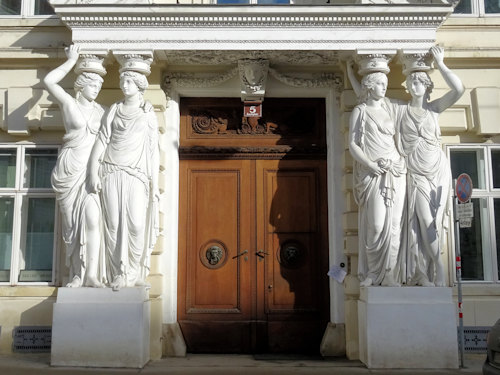
(The entrance to Palais Pallavicini now)
The four female figures flanking the doorway of this palais date back to 1786 and caused quite a scandal at the time. Look at the bottom right window in the old photo and it seems the prospect of a photographer caused quite a stir among the inhabitants.
Incidentally, Palais Pallavicini is one of many historical sites and streets that star in the popular period detective series, Vienna Blood. Though the building also featured prominently in an even more famous production: The Third Man.
Palais Epstein

(Palais Epstein, probably late 19th century)
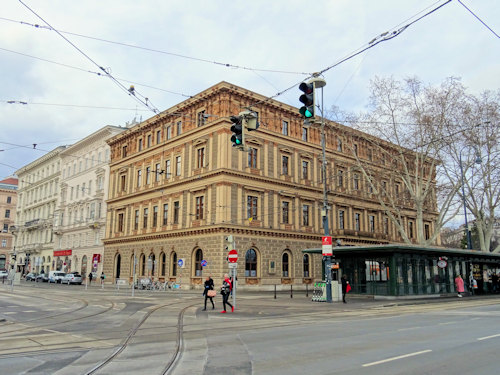
(Palais Epstein now)
Built in 1873, Palais Epstein now houses parliamentary offices, but has provided a home for the HQ of the Nazi construction ministry, the Russian army, and the Viennese school authorities (there’s a joke to be made there). In the old photo, a bookseller occupies the ground floor.
The renovated main parliament building reopened in 2023 and offers English-language tours of both the interior and of the Palais Epstein site.
State Opera House
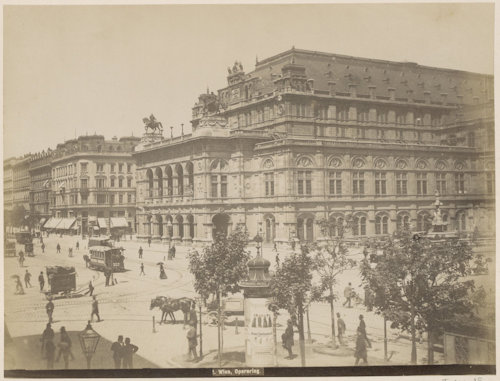
(The State Opera House, sometime between 1880 and 1895)
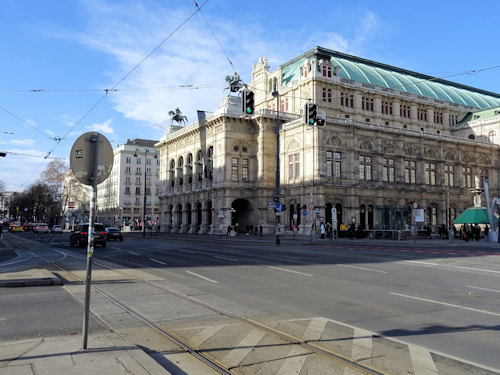
(The Staatsoper now)
Opened in 1869 and another victim of WII bombing that required considerable restoration work: the Wiener Staatsoper. You don’t have to see a performance to go inside, since the Staatsoper offers guided tours of the interior.
Not sure how I managed to get a largely traffic-free photo of the current view. Miracles do happen.
Hoher Markt
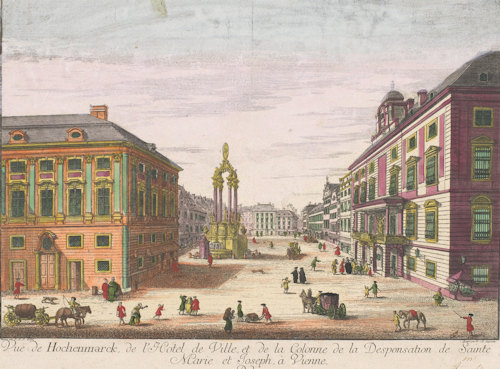
(The Hoher Markt in the second half of the 18th century)

(The Hoher Markt in 2019)
Apparently, the Roman Emperor Marcus Aurelius once stayed on this central square. That’s how old it is. The location now provides a home for the Roman Museum.
The area also suffered considerable damage during WWII, providing another perfect bombed-out setting for The Third Man. All that’s left today from the 18th-century picture is the Vermählungsbrunnen fountain erected in 1732.
Since I started this article, the Wien Museum has made much of its old photo collection available digitally. So I shall repeat the exercise with more locations sometime in the future…